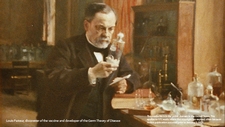Scientists and Society

TEKS Objective
The student is expected to connect grade-level appropriate science concepts with the history of science, science careers, and contributions of scientists.
Essential Understanding
The student knows that information, critical thinking, scientific problem solving, and the contributions of scientists are used in making decisions.
Science Background
What Do Scientists Do? Try Science (website) – Science plays a crucial role in numerous jobs and influences society greatly. Read about the importance of science careers and how students can be engaged to think about them.
Signature Lesson
Scientists: Cornell Center for Materials Research (PDF) – This multi-lesson unit focuses on scientists. Students are introduced to careers, research a famous scientist and create a questionnaire for a real scientist.
Scientists
Cornell Center for Materials Research, www.ccmr.cornell.edu
- Supporting Lessons
- Extensions
- Assessment Ideas
- Literature Connections
- Related
TEKS - Additional Resources
Supporting Lessons
The Lives of Four Famous Scientist: Core Knowledge (PDF) – Students research four scientists from different periods in history.
The Lives of Four Famous Scientist
Core Knowledge, www.coreknowledge.org
The Face of Science: Kinetic City (website) – Students draw pictures of scientists and analyze their depictions as a class. Then, students research the work and contributions of actual scientists to evaluate the accuracy of their drawings.
Elaboration Lessons and Extensions
Famous Scientist Wanted Poster Project: Alabama Learning Exchange (website) – Students create a wanted poster that features a famous scientist.
Famous Scientist Wanted Poster Project
Alabama Learning Exchange, alex.state.al.us
Assessment Ideas
Minority and Female Contributions to Science and Industry: Inventions.org (website) – Students chose one scientist and creates a poster illustrating the accomplishments, successes and contributions of this individual.
Minority and Female Contributions to Science and Industry
Inventions.org
Literature Connections
What is a Scientist? Lehn, B. (ISBN-13: 978-0761312987)
Scientist Ask Questions. Garrett, G. (ISBN- 978-0516246628)
Additional Resources
Secret Lives of Scientists and Engineers: NOVA (website) – Expose students to dozens of real, scientists and engineers. Video interviews are personal and shed light on why these men and women chose to be scientists.
Secret Lives of Scientists and Engineers
NOVA, www.pbs.org/wgbh/nova
TEKS Navigation
Grade 3
Need Assistance?
If you need help or have a question please use the links below to help resolve your problem.

Comments